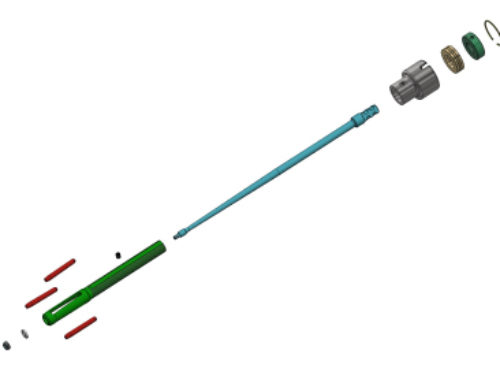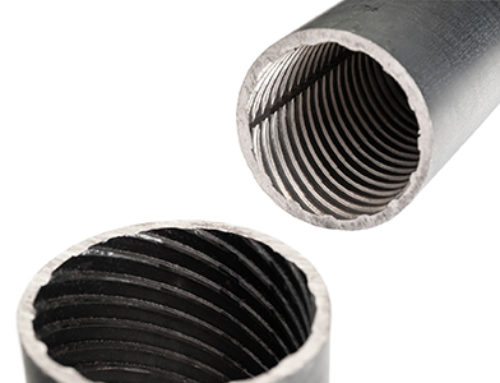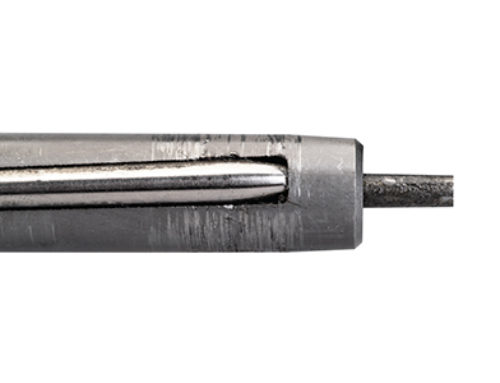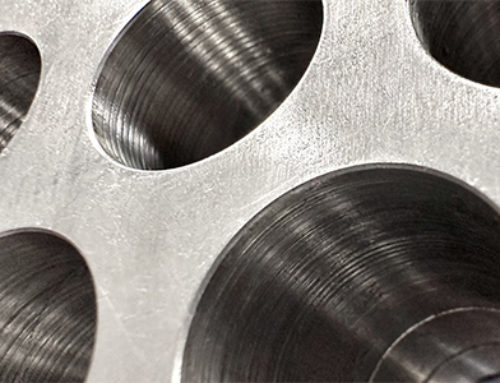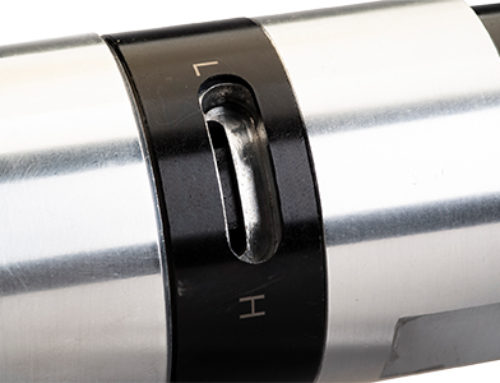
A traditional expander’s rolls are set at an angle to the mandrel, otherwise referred to as a feed angle. This feed angle causes a screw-like action that automatically feeds the mandrel into the tube as it rotates. With parallel pin expansion, the rolls are set parallel with the mandrel with zero feed angle. This means that the mandrel will not self-feed as a traditional expander would. Instead, the mandrel is pushed through the expander by force, allowing the tube to expand.

Traditional Expander

Parallel Pin Expander
There are two common reasons for choosing parallel pin expansion. The first is that it could reduce the stress on tube seal welds. The second is that it is typically much faster than traditional expansion.
Some end customers are requiring manufacturers to use parallel pin expansion on seal welded tubes. They believe this process can better protect the integrity of the weld. In traditional expansion, the feeding of the mandrel introduces a pulling force on the tube, thus creating stress at the weld. With parallel pin expansion this force could be reduced or eliminated since the mandrel is being pushed into the tube and the rolls are being forced directly outward towards the tube wall.

Parallel pin expansion can be significantly faster than traditional expansion due to the method in which the mandrel is pushed and pulled from the tube. In traditional expansion, the rotation of the mandrel combined with the feed angle determines how quickly a tube can be expanded. Once the expansion is complete, the mandrel rotation must be reversed to remove the expander from the tube. Parallel pin expanders are constantly rotated in one direction while the mandrel is pushed and pulled from the tube, independent to its rotational speed.
This eliminates a portion of the time that a traditional expander needs to feed into and out of the tube thus reducing the expansion cycle time. Cycle times can be reduced by 50% or more over traditional expansion. Many heat exchanger manufacturers find that this increase in speed can give them a competitive advantage by increasing throughput in their bundle shop.
In summary, parallel pin expansion refers to the alignment of the rolls with the mandrel resulting in a zero degree feed angle. The result is that the mandrel can be inserted and removed from the tube using force, generally electric or hydraulically driven. Many heat exchanger manufacturers that choose to use parallel pin expansion do so for two common reasons, it could reduce the stress on seal welded tubes and it is significantly faster than traditional expansion.

